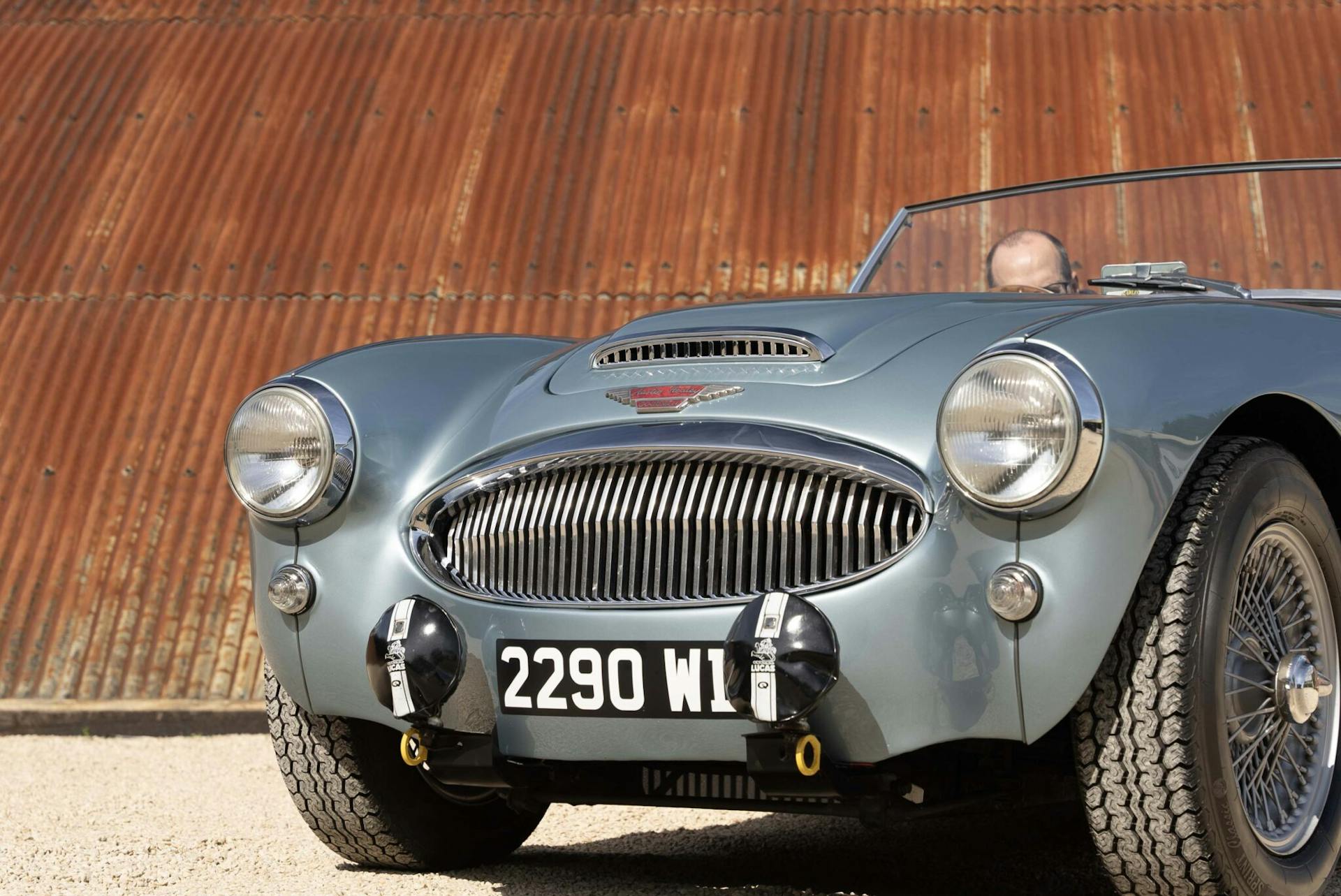1961 Austin Healey 3000

VEHICLE DESCRIPTION
For many enthusiasts, the Austin-Healey 3000 remains the archetypal British sports car of the late 1950s and early 1960s, thanks to its blend of performance, style and competition pedigree.
The car being offered for sale here perfectly epitomises those qualities thanks to a long-term programme of restoration work and well-chosen upgrades. Originally built in June 1961, it is a Mk2 BT7 that was dispatched that month to the Donald Healey Motor Co in Warwick.
The ‘BT7’ name denotes that it featured the practical 2+2 seating arrangement, and it wasoriginally finished in Healey Blue with a blue interior. The Heritage Certificate that accompanies the car shows that it was supplied new with wire wheels, a heater, an adjustable steering column, and an overdrive unit for the four-speed gearbox.
Beginning in 2005, the Healey was treated to a series of work that started with the restoration of its chassis and bodywork. Four years later, the engine was rebuilt by renowned marque specialist Rawles Motorsport – a job that including uprating the six-cylinder unit to fast-road specification. It was given an unleaded conversion, plus a Rawles performance inlet manifold with new SU carburettors, a Mallory distributor, an alternator, a high-torque starter and a stainless-steel side-exit exhaust.
The bumpers were also removed at this time, giving the car a look that evokes period racing Healeys, but they’ve been retained should a future owner wish to reinstate them.
The gearbox and overdrive were rebuilt in 2010, and work since then has included uprating the braking system, fitting an adjustable steering box, installing a new wiring harness, and adding wing vents – a very effective modification that helps to reduce under-bonnet temperatures.
In 2017, the safety harnesses were replaced with inertia-reel seatbelts, and the following year the front seats were retrimmed. The final touch came in 2020, when Hexagon Classics resprayed the Healey in the striking two-tone colour scheme of Ice Blue metallic over Old English White.
This Healey 3000 comes with a works-style hardtop plus an extensive history file that includes a wealth of invoices cataloguing the restoration and upgrade work that’s been carried out, and it’s very attractive example of this muscular British sports car.
MODEL HISTORY
Donald Healey founded his eponymous car company in 1945, having already served as an RFC pilot in World War One, won the Monte Carlo Rally driving an Invicta, and worked for both Riley and Triumph.
At the 1952 London Motor Show, Healey produced a new model with styling by Gerry Coker, a chassis by Barry Bilbie, and the 2660cc four-cylinder engine from an Austin A90. Austin boss Leonard Lord was suitably impressed, and a deal was done for final assembly to take place at Austin’s Longbridge plant.
That first Austin-Healey 100 was replaced in 1956 by the six-cylinder 100-6, which was powered by BMC’s 2.6-litre C-Series engine. The straight-six initially produced 102bhp, but modifications to the cylinder head and inlet manifold boosted that to 117bhp in 1957, the same year that production moved from Longbridge to the MG factory at Abingdon.
The next step came in 1959 with the introduction of the Austin-Healey 3000. A development of the 100-6, it featured a 3-litre version of the six-cylinder C-series engine as well as front disc brakes.
It retained the basic styling of the 100-6, as well as the option of a two-seater (BN7) or 2+2 (BT7) layout, but maximum power was up to 132bhp. The suspension was independent at the front via wishbones and coil springs, with a rigid axle and semi-elliptic leaf springs at the rear. A four-speed gearbox was used, with Laycock de Normanville overdrive operating on third and fourth gears.
A more powerful MkIII version was introduced in 1964, and production ended in 1967. By then, the Austin-Healey 3000 had established itself not only as a memorable road car and a great export sales success, but also as one of the finest rally cars of all time. Driven by the likes of Pat Moss, Rauno Aaltonen and Timo Mäkinen, its long roll call of success includedtwo victories apiece on the Liege-Rome-Liege Rally and the Alpine Rally.